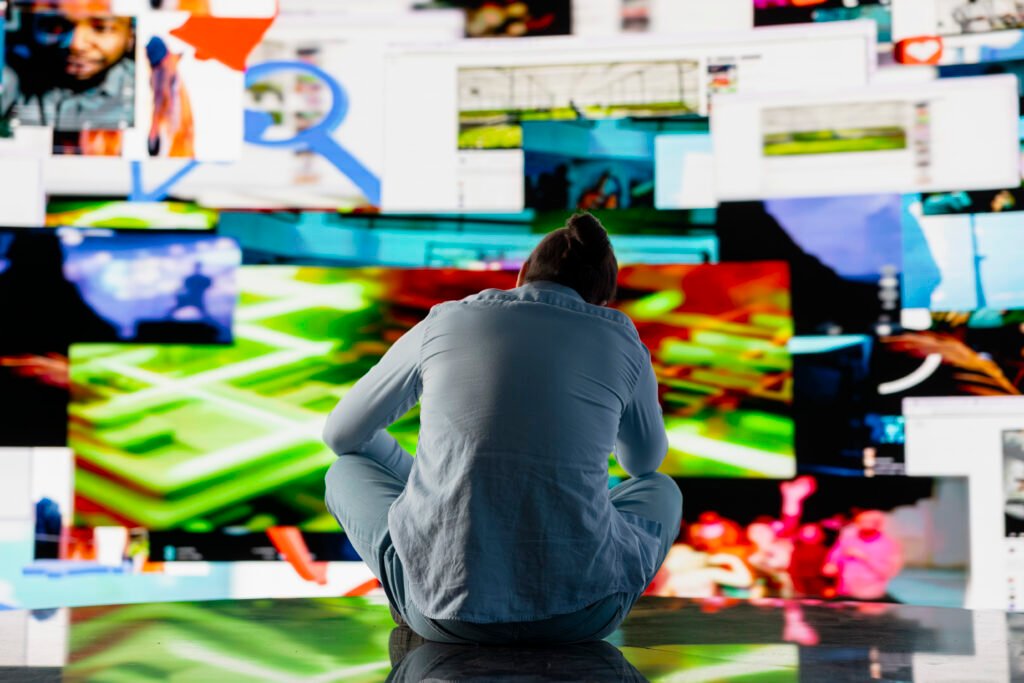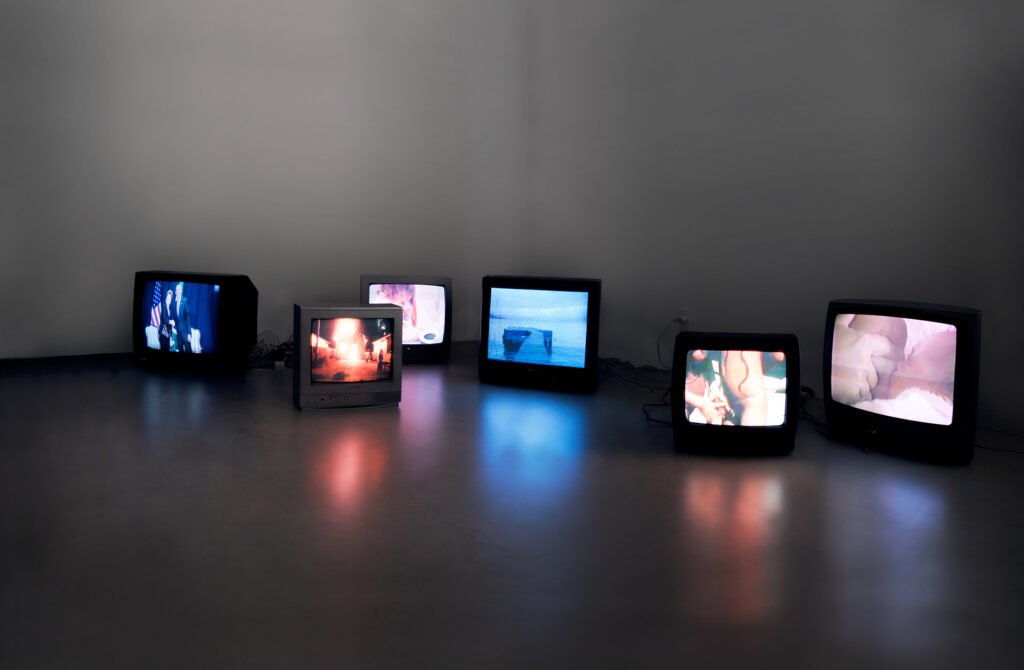Video art emerged in the 20th century as a rupture with traditional art forms. By combining sound, moving images, and installation, this medium introduced new expressions that defy conventional viewing. It is not merely about aesthetics, but a language that provokes, denounces, and immerses the viewer in unique sensory experiences.
With technological advancements and greater access to digital tools, video art has gained ground in museums and biennials around the world. From early experiments to contemporary works, it critically and sensitively engages with the present.
The Origins of Video Art and Its Critical Role
Video art began in the 1960s, driven by artists seeking new languages outside commercial art circuits. One pioneer was Nam June Paik, considered the father of video art, whose work Magnet TV (1965) redefined the relationship between viewer, technology, and art. He used televisions as platforms for aesthetic and political experimentation.
According to Video Art by Michael Rush (2003), video art became a subversive artistic field. Many works addressed censorship, war, media control, and social alienation. Artists like Martha Rosler and Bill Viola used video to explore gender, violence, and spirituality. Rosler’s Semiotics of the Kitchen (1975), for example, deconstructs female stereotypes through a simple yet powerful performance.
Similarly, Theories and Documents of Contemporary Art (Stiles and Selz, 2012) highlights how video art was among the first to incorporate the artist’s body as both medium and message. This centrality of the body, often in tension with space, remains a constant today.
Sensory Experiences and Immersion
Over time, video art moved beyond social critique to explore sensory experience. Through multiple screens, ambient sounds, slow motion, and abstract images, artists began to create installations that envelop viewers in immersive environments.

Bill Viola is a key figure in this sensory shift. His works offer almost meditative experiences, addressing themes such as birth, death, and spirituality. MoMA and Tate Modern have dedicated full exhibitions to his work. In The Crossing (1996), the fusion of slow-motion video and minimal sound guides the viewer into a contemplative state.
These experiences are not just visual but also physical. In many exhibitions, the viewer’s body becomes part of the artwork. Interaction with space and the sensation of being “inside” the art redefine the boundaries between artwork and audience. Video art, in this sense, is not simply watched; it is traversed.
Contemporary Video Art
Today, video art holds a central place in contemporary art centers as well as digital platforms. Artists like Pipilotti Rist and Hito Steyerl continue to innovate this language. Rist uses color, pop music, and large-scale projections to turn galleries into dreamlike environments. Steyerl addresses topics such as digital surveillance and algorithms, merging political critique and post-internet aesthetics.
Institutions like the ZKM Center for Art and Media (Germany) and Sesc Pompeia (Brazil) have hosted major exhibitions on video art. Additionally, platforms like UbuWeb offer free access to hundreds of historical and contemporary video art pieces, broadening access for the general public and researchers.
In a world overwhelmed by fleeting videos and algorithm-driven consumption, video art endures as a space for pause, critique, and deep engagement. It challenges not only formats but also visual habits and audience perception.
Thus, video art remains current and essential, reinventing itself through emerging technologies and standing as one of the most free and intense forms of contemporary art.



